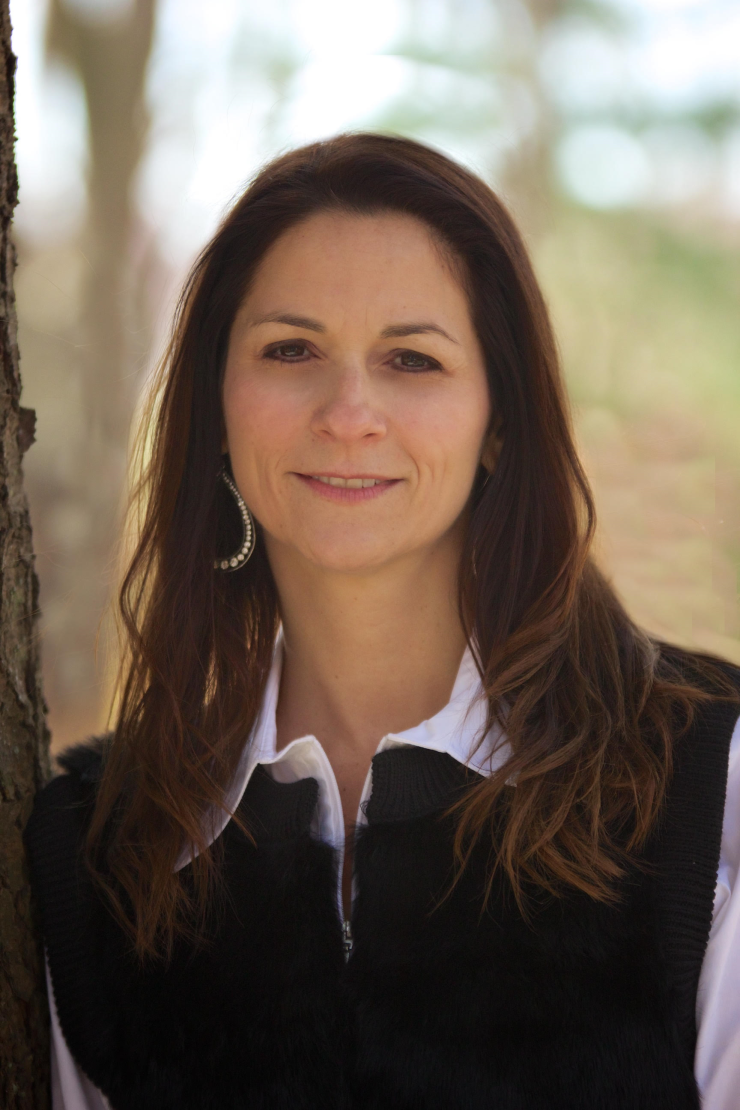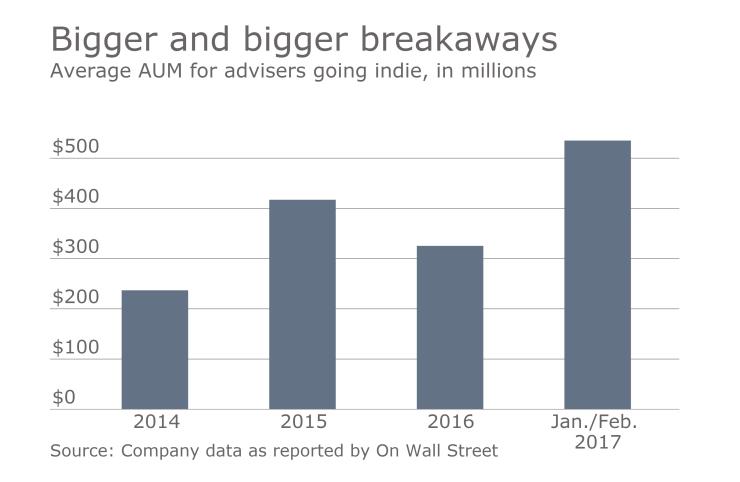BOSTON ― The day advisor Beth Sweeney switched firms, she bid a tearful goodbye to Wells Fargo colleagues she had known for a decade or more. Though she didn't have to travel very far to switch firms ― her new office was in the same building complex ― she still had something of a long journey ahead of her. Sweeney's new mission: call over 150 clients within 48 hours to explain why she left to join independent firm Steward Partners.
"These were not quick phone calls. Some of these clients have been with me for 15, 20 years," she says.
Over the course of a few days, Sweeney and two other teams opened
Their first hours were marked by a frenzy of activity. While advisors worked the phones, a transition team composed of more than half a dozen transition specialists assembled hundreds of red packets in a large conference room down the hall. Each packet was mailed overnight and contained information for clients on the new firm and its affiliation with Raymond James.
Sweeney, meanwhile, hit her goal. "I was so fried," she says.

’IT’S A FRENZY’
Switching firms can be an anxious time for advisors, since they don't know if their clients will indeed follow them to their new firm. Meanwhile, former employers do everything they can to retain the accounts.
"They'll go after their clients pretty heavily," says recruiter Michael King, who was not involved in these moves. "It used to be that some brokers would call and bad mouth their former colleague, saying that 'Well, they were not servicing your accounts that well.'"
Though those kinds of dirty tactics are not as prevalent today, partially due to HR concerns, it's still fiercely competitive, King adds.
When advisors David Karp and Paul Pagnato left Merrill Lynch to go independent with HighTower in 2011, they resigned at 8 a.m. on a Friday and had a car waiting to whisk them away to their new office.
"Within 90 seconds of our resignation, we were on the phone with our clients," says Karp, whose $2.5 billion RIA is based in Reston, Virginia. "It's a frenzy. You want them to hear about it from you before your firm reaches out to them."
Raymond James, RBC and Ameriprise were among the industry players to lure away talent from Merrill Lynch.
MANY FLAVORS OF INDEPENDENCE
Sweeney and her colleagues' desire to move to an independent firm is testament to the enduring appeal of non-wirehouse business models.
The independent space has grown
-
The Broker Protocol is just the first step. Those entering the fiduciary world still have to proceed with caution.
May 2 -
Choices are mushrooming in the independent space for top advisors seeking a career change, recruiters say.
April 26 -
The benefits of going independent are alluring, but wirehouse advisers can't afford to discount the formidable challenges ahead.
March 31
Moreover, the number of ways to go independent now runs the gamut from operating a solo RIA to network models to independent broker-dealers.
The variety is somewhat limited by what regulators say firms can and can't do, says Alois Pirker, research director at Aite Group. "But the nexus can vary greatly."

Pirker expects more creativity to come. This is particularly appealing to wirehouse advisors who don't also want to be burdened with the minutiae of building a firm from scratch.
"We could have been fully independent and had our own RIA and computers and office space ― and you have to manage all that. We decided we didn't want that," says advisor Stephen Spector, who moved to Steward Partners' new office with longtime teammate Peter Frisch.
Their team opted for Steward Partners because the model offered greater independence and operates as a partnership, they say. Sweeney and Ali Mandalinci, a former UBS advisor who joined the office several days after them, echo that sentiment. Plus, new hires get equity in the firm. The attraction of having an ownership stake has helped Steward Partners recruit 59 advisors since ex-wirehouse managers founded the Washington-based firm in 2013.
"To own part of this place, it changes your attitude in terms of when you want to come in or leave for work," says Steward Partners adviser Peter Frisch.
'LIKE A GRADUATION'
Despite the appeal of greater independence and potentially higher pay, leaving their old firms wasn't easy for Steward Partners' newest recruits.
"That was tough," Spector says.
In his 33-year career, he had never switched firms. Spector and his partner Frisch, who also hadn't moved during his 22 years in the business, had deep relationships with their former colleagues.
"I'd call it bittersweet, like a graduation," Spector says. "You are moving on to bigger and better things, but there's always a little sadness."
Mandalinci had previous experience switching firms; he started his career at Merrill Lynch when he was 22 years old, but left for Smith Barney after the wirehouse took away his biggest client because they deemed him too young, he says. After Smith Barney merged with Morgan Stanley, he switched to UBS.
Still, he "dreaded" resigning from the Swiss firm, he says. "I enjoyed UBS, it was a good firm. Real good people work there. I liked it, but it wasn't the place for me," says Mandalinci, who made his move a few days after the other advisors.

OWNING IT
Mandalinci and the other Steward Partners recruits say the firm's culture, affiliation with
In a sense, it also reflects a different Wall Street era, when storied firms, such as Salomon Brothers, were partnerships, not public companies.
"I think to have the right priorities you have to have skin in the game," Spector says.
Frisch also says that clients were quick to note that their new business cards now say "partner." He adds: "To own part of this place, it changes your attitude in terms of when you want to come in or leave for work."
Unlike other high-profile firms in the independent space, such as HighTower and Focus, Steward Partners does not have private equity backing, something that the firms' leaders say they have intentionally avoided.
"With private equity you know what you are getting: A short timeframe, typically three to five years, and a bunch of really smart people who will try to micromanage your business," says Michael McMahon, chairman of Steward Partners board and who founded Pine Brook Partners, a private equity firm specializing in the energy sector.
McMahon is not affiliated with Raymond James; the St. Petersburg-based firm also does not have an ownership stake in Steward Partners.
With big capital injections from private equity,
-
Blue chip private equity firms Stone Point and KKR enter the RIA market with a majority stake purchase of the New York consolidator.
April 19 -
The firm's advisers and competitors are wondering about its next steps, and who will cash in. The answers will go a long way toward shaping the future of the independent channel.
March 28 -
The platform provider will now offer to buy a percentage of an advisory firm's revenue.
May 3
By foregoing private equity, Steward Partners executives say they avoid that pressure and can focus on steady growth within their target primary target area of the Northeast.
"We're never going to open an office empty," CEO and Co-Founder Jim Gold says.
In other words, it has to be economically viable from the state. And executives say they put in considerable effort to ensure that.
"In Albany, we were probably going up there for two years before we opened [that office]," Gold says of the firm's upstate New York location.

53 RED PACKETS
There's something of a cloak-and-dagger atmosphere to advisor moves because confidentiality is critical. In a twist, Spector and Frisch's team, as well as Sweeney's, all worked at the same Wells Fargo office, but had no idea they were planning on the same move.
"We never reveal who we are talking to. But we'll ask, 'Who would you never want to work with?'" says Greg Banasz, managing director at Steward Partners.
Departing advisors also need to maintain a level of secrecy because of the strictness of the Broker Protocol and the litigious nature of the big firms (
Not being able to get feedback from clients about the intention to leave compounds the stress of a transition, says Karp, the ex-Merrill broker.
"I lost sleep over it," he says.
Some firms have developed robust processes to relieve that stress and ensure clients can easily transfer accounts. Steward Partners' executives have a team of specialists that begins prep work before recruits join. The specialists are on site when new hires arrive; Raymond James also provides additional support. Steward Partners, which has plans to add more offices, added two new staff members this year to help handle the volume.
"A transition happens across all areas. It doesn't happen in a vacuum," says Valarie Margaritopoulos, head of operations for Steward Partners, noting it impacts administration, human resources and more.
In Boston, Margaritopoulos and her teammates assembled packets for clients in a conference room while simultaneously answering advisors' questions.
Combined, Steward Partners' new hires served more than 500 households before the move. But the size was far from the transition team's biggest-ever challenge. Earlier this year, Steward Partners
HighTower and Dynasty added big platform clients as wirehouse brokers continued to flee.
"I think to have the right priorities you have to have skin in the game," adviser Stephen Spector says.
’NOW, NOW, NOW’
Typically, advisors switching firms take about 90% of their assets with them, according to recruiters. But moving the clients with the advisor can take up 90 days; a single client may have multiple accounts, securities-based loans as well as estate and trust planning needs.
"Your sense of urgency is now, now, now because it's your business," says Danny Sarch, a recruiter involved in one of the moves. "But clients do it in their own time. They have a vacation or a wedding coming up, and they don't have the same sense of urgency that the advisor does. That's why some clients move two or three or four months later."
Mandalinci, who serves a relatively small number of clients and who has switched firms before, says he was impressed with the transition team's process and diligence. Still, he admitted to having a "little anxiety."
"If it was up to me, I'd take 53 packets and make 53 visits to each client. But that would take months," he says.
He left UBS on Thursday, May 4, and went directly to his new office at Steward Partners. By the mid-afternoon he had called 20 clients. The tally: 19 agreed to move with him, and one was a maybe, Mandalinci says.
"That's one of the hardest things about deciding to make a move. There is a period where I can't do my job because I'm transitioning clients. So, in 60 or 90 days I'm looking forward to a return to normalcy," he says.
But in the meantime, he and the rest of the Steward Partners' crew were pushing forward with the transition process. At 3 p.m. Thursday, Mandalinci was about halfway through the number of clients he needed to call. Stacked by the front door were 53 red packets for overnight shipping, one per client. The UPS driver was due any minute.







